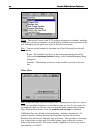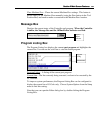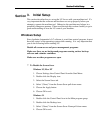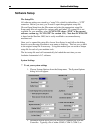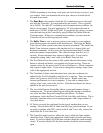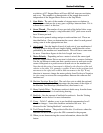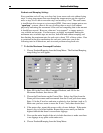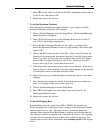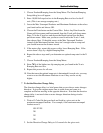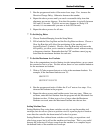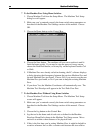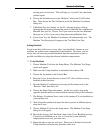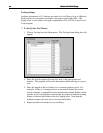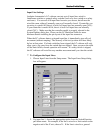
Section Section 33 Initial SetupInitial Setup
2828
Feedrate and Ramping Settings
Every machine tool will vary as to how fast it can move each axis without losing
steps. Losing steps means that even though the stepper motor gets the signal to
move a step, it isn’t able to move the step, and accuracy is lost. The usual cause
is insufficient drive torque at a given motor RPM. Since most stepper motors are
“open loop” systems, there is no way of telling when a step is lost without
physically measuring the movement of the axis and comparing that to the amount
it should have moved. However, when not “over torqued”, a stepper motor is
very reliable and accurate. For that reason, we highly recommend finding the
maximum rates at which steps are not lost, both with and without ramping, and
then limiting the maximum rates for each axis to about 70% of those values. Due
to variations in the drive mechanism for each axis, make sure you do the
following tests in all directions, and at several positions along each axis.
4 To Set the Maximum Unramped Feedrates
1. Choose Feedrate/Ramping from the Setup Menu. The Feedrate/Ramping
setup dialog box will appear.
2. Enter 99 for the X axis Max Unramped Feedrate, and 100 for the
Maximum Feedrate, then choose OK.
3. Choose the Point button on the Control Box. Select Any Point from the
Name pull-down menu and Incremental from the Coord pull-down menu.
Enter 1.0 in the X text box and enter a relatively slow feedrate (such as 5).
Make sure you have room to move the X axis 1 inch, then choose Start.
4. If the motor slips, repeat this process with a slower feedrate. If the motor
doesn’t slip, try a faster feedrate. Repeat this process until you find the
highest feedrate that doesn’t cause motor slippage.
5. Now run the entire length of the axis in both directions to make sure there
is no slippage at any point on the entire axis.
6. Choose Feedrate/Ramping from the Setup Menu.



